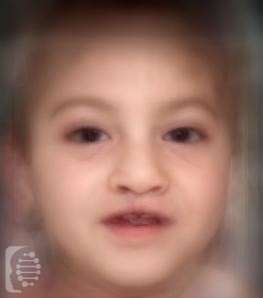What is Hartsfield syndrome (HRTFDS)
This rare disease is a genetic syndrome with two major, serious symptoms.
The first is holoprosencephaly, which is when the brain does not develop properly. The second is ectrodactyly, which affects the hands and feet.
There have been around 37 cases reported of this rare syndrome to date, and most of these cases have been in males.
This syndrome is also known as:
Holoprosencephaly, Ectrodactyly, and Bilateral Cleft Lip/palate
What gene change causes Hartsfield syndrome (HRTFDS)?
Mutations in the FGFR1 gene are responsible for causing the syndrome. It has been found that the syndrome can be inherited generally in an autosomal dominant pattern. However, there have been a few cases where it has been inherited in an autosomal recessive pattern.
In the case of autosomal dominant inheritance, just one parent is the carrier of the gene mutation, and they have a 50% chance of passing it onto each of their children. Syndromes inherited in an autosomal dominant inheritance are caused by just one copy of the gene mutation.
Autosomal recessive inheritance means an affected individual receives one copy of a mutated gene from each of their parents, giving them two copies of a mutated gene. Parents, who carry only one copy of the gene mutation will not generally show any symptoms, but have a 25% chance of passing the copies of the gene mutations onto each of their children.
What are the main symptoms of Hartsfield syndrome (HRTFDS)?
One of the main and most serious symptoms of the syndrome is holoprosencephaly. This affects the development of the brain. It occurs when the two hemispheres of the brain don’t divide properly. In the most severe cases, the brain fails to divide at all, which in most cases will cause premature death. In less severe cases, the two hemispheres of the brain partially divide which in turn can lead to a number of related medical issues. These include a malfunctioning pituitary and diabetes insipidus.
The second main symptom is ectrodactyly, which is a deep slip through the hands and or feet. This then usually results in missing fingers and toes.
A cleft lip/palate completes the triad of the syndrome.
Seizures and developmental delays are also known symptoms of the syndrome.
Possible clinical traits/features:
Wide nose, Abnormality of the sense of smell, Cleft palate, Aplasia/Hypoplasia of the corpus callosum, Aplasia/Hypoplasia affecting the eye, Aplasia/Hypoplasia of the radius, Absent nares, Telecanthus, Ptosis, Microcephaly, Respiratory failure, Holoprosencephaly, Gonadotropin deficiency, Global developmental delay, Hypertelorism, Hypernatremia, Hypotelorism, Hypospadias, Hypoplasia of the frontal bone, Posteriorly rotated ears, Non-midline cleft lip, Syndactyly, Autosomal dominant inheritance, Cryptorchidism, Craniosynostosis, Agenesis of corpus callosum, Split hand, Ectrodactyly, Downslanted palpebral fissures, Depressed nasal bridge, Epicanthus, Encephalocele, Cleft upper lip, Diabetes insipidus, Neonatal hypotonia, Micropenis, Intrauterine growth retardation, Low-set ears, Low-set, posteriorly rotated ears, Lobar holoprosencephaly.
How is Hartsfield syndrome (HRTFDS) diagnosed?
To find out if someone has a diagnosis of Hartsfield syndrome (HRTFDS), it is important to have a consultation and evaluation with a clinical genetic specialist. Specialists may also suggest specific genetic testing or other types of tests to help reach a diagnosis. FDNA’s AI technology can help speed up the diagnostic process by analyzing facial features and other health information.

